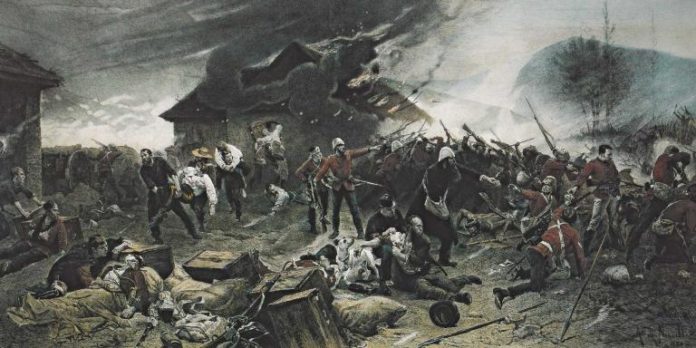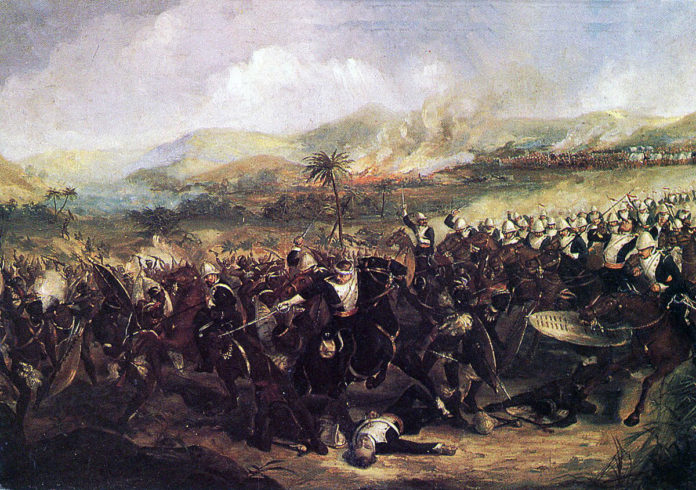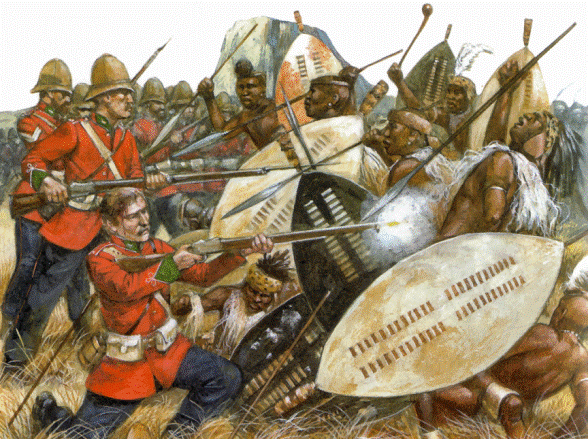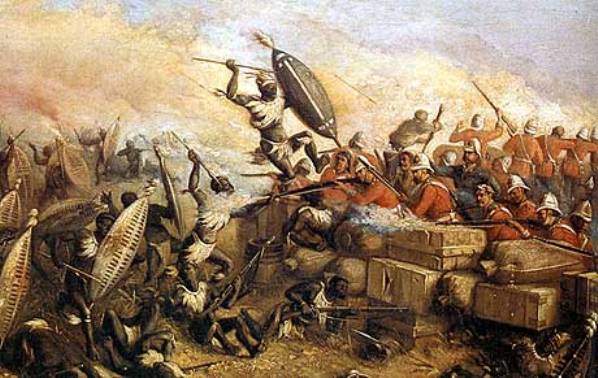The Zulu war which took place in South Africa between the Zulu kingdom and the British Empire occurred in 1879 and was initiated by Sir Henry Bartle Frere who decided to fight against the Zulu Kingdom; an independent state in South Africa. The British army was led by Lord Chelmsford and the Anglo-Zulu war resulted in one of the most bloody wars ever to take place on South African soil. Below are the 10 notable facts about the Zulu war.
1. The Zulu King During the War

Cetshwayo kaMpande was the King of the Zulu Kingdom from 1872 to 1879 and their leader during the Anglo-Zulu War. At the time of the Zulu war, he refused to submit to the British. He, therefore, put up an army of forty thousand to sixty thousand men. He made his brother, Dabulamanzi the commander of the Zulu army.
2. Cause of the Zulu War
The main cause of the war was border disputes between Cetshwayo, the Zulu king and the Boers. However, a commission ruled in favor of the Zulu people in July 1878. Despite the ruling, Sir Henry Bartle Frere who was the high commissioner to South Africa at the time, gave an ultimatum to the commission meeting. Cetshwayo however gave no response to the issue and consequently, the British invaded the Zulu nation in January 1879 without the permission of the British Government. This invasion was led by Lieutenant-general Frederick Augustus Thesiger. The British invaded Zululand through the Rorke’s Drift, lower Tugela and Utrecht and were to go towards Ulundi which was the royal capital at the time.
3. Battles that Took Place During the War
The war between the British Empire and the Zulu Kingdom took place in five different areas and thus the five different battles. These battles include the battle of Isandlwana, the battle of Rorke’s Drift, the battle of Khambula, the battle of Gindlovu and the battle of Ulundi. The Zulu warriors, however, were weakly armed as they used thrusting spears (iklwa), throwing spears, clubs and shields. On the other hand, the British soldiers were armed with rifles.
4. Battle of Isandlwana
Interestingly, the battle of Rorke’s Drift took place on the very same day with the famous Battle of Isandlwana. The two battles took place on the 22nd January 1879. In this battle, the Zulu army was led by chief Ntshingwayo kaMahole and Mavumengwana Kamdlela Ntuli. On the other hand, the British were led by their commanders Lieutenant-Colonel Anthony William Durnford and Lieutenant-Colonel Henry Pulleine. During the battle of Isandlwana, the British forces were completely wiped out. This was however not expected because the Zulu warriors had inferior weapons as compared to the British soldiers who were well equipped. The British empire considered this the worst defeat that they had ever suffered against the natives.
5. Battle of Rorke’s Drift

The battle of Rorke’s Drift took place at Tugela River in Natal, South Africa. The British were led by their commanders; Lieutenant Gonville Bromhead and Lieutenant John Chard. Prince Dabulamanzi Kamapande, the commander of the Zulu army led the Zulus during this war. Unlike the battle of Isandlwana, the British won the fight despite the low numbers of the British troops. However, with the hope of negotiating a peaceful settlement, Cetshwayo had ordered that entry into the British colony of Natal was forbidden for his warriors.
6. Battle of Khambula
On the 29th March 1879 and as part of Zulu war, the battle of Khambula took place in the northern part of Zululand. Ntshingwayo kaMahole commanded the Zulu warriors while Colonel Evelyn Wood commanded the British army. Despite the fact that the British forces were greatly demoralized by their defeat in the Isandlwana battle, they eventually won this battle. The British thought this particular war to be their turning point in the Zulu war.
7. Battle of Gingindlovu
At the Eastern part of Zululand, the battle of Gingindlovu took place on the 2nd of April 1879. Lieutenant-General Lord Chelmsford was in charge of the British and Natal colonial forces while Somopho kaZikhala was in charge of the Zulu warriors. Again, the British won the battle.
8. The Last Battle

The Battle of Ulundi which was the final battle took place on 4th July 1879 at Ulundi which was the capital of Zulu land. King Cetshwayo headed the Zulu warriors during the battle while Lieutenant-General Lord Chelmsford led the British soldiers’ during the war. The British army at the battle consisted of seventeen thousand men while that of the Zulu consisted of twenty-four thousand men. This time, however, King Cetshwayo had bought rifles and muskets in a bid to strengthen his army. However, in addition to the weapons being of poor quality, the Zulu men were also not trained well to use the guns. Due to this, they lost the war to the British.
9. Impact of the War
Many lives were lost both of the British and the Zulu sides. On 28th August 1879, the Zulu king, Cetshwayo was captured and exiled to cape colony. In addition, chiefs of the Zulus surrendered to the British empire.
10. Historical Remains
Interestingly, after one hundred and thirty years, the remains of Color-Sergeant M.C. Keane who died during the first Zulu war were identified. This was thanks to a metal tunic badge that was discovered with his skeletons. However, to date, historians are still trying to find his descendants so that they may return the badge to the family.

